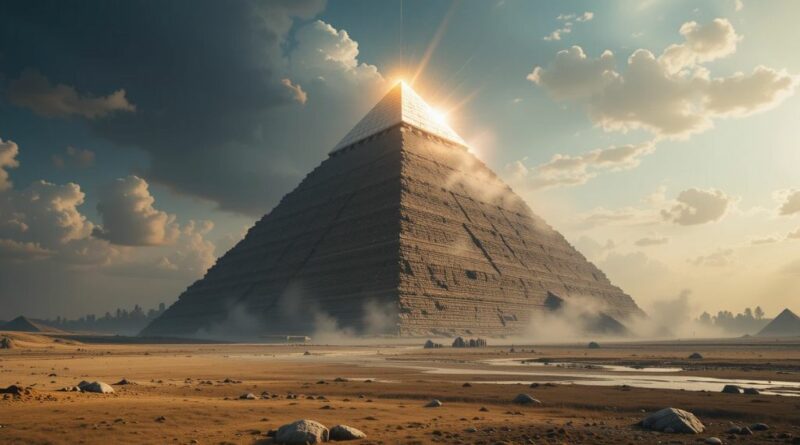The Mysterious Ancient Pyramid of the Judean Desert
Just a few days ago, archaeologists from the Israel Antiquities Authority (IAA) stumbled upon a discovery that’s rewriting the story of the ancient world—a mysterious ancient pyramid in the Judean Desert, surrounded by weapons, papyri, and relics that have survived over 2,200 years. This discovery from the Hellenistic period offers a tantalising glimpse into another exciting ancient chapter of human civilisation.
Nestled north of Nahal Zohar, near the Dead Sea, this pyramid-shaped structure isn’t your typical Egyptian monument. Built from hand-hewn stones—each weighing hundreds of kilograms—it towers over the desert landscape, a silent sentinel of a bygone era. Alongside it, excavators uncovered a treasure trove of artefacts: Greek papyri, bronze coins stamped with the visages of Ptolemaic rulers and Antiochus IV, and an arsenal of ancient weapons. Add to that wooden tools, fabrics, and even furniture, all astonishingly preserved thanks to the arid climate. It’s the kind of find that makes you wonder—what secrets does this pyramid hold?
Led by excavation directors Matan Toledano, Eitan Klein, and Amir Ganor, the team describes it as “one of the richest and most intriguing archaeological excavations ever found in the Judean Desert.” Initially thought to date back to the First Temple period, new evidence points to its construction during the Hellenistic era, when the Ptolemies and Seleucids vied for control of the region. But what was its purpose? Was it a guard tower protecting a vital trade route ferrying salt and bitumen from the Dead Sea to Mediterranean ports? Or perhaps a monumental tomb, a ceremonial marker lost to time? The mystery is as captivating as the artefacts themselves.
What’s more, this discovery is part of an eight-year mission to safeguard the Judean Desert’s archaeological wonders from looters. Using advanced tech and sheer determination, the IAA has surveyed 180 kilometres of cliffs and explored 900 caves, unearthing everything from hidden scrolls to coin hoards. The Nahal Zohar pyramid stands out, though, not just for its size but for the questions it raises. Volunteers have flocked to the site, digging alongside professionals, their hands brushing against history with every find—a fragment of papyrus here, a rusted blade there.
The desert’s dryness has been a silent ally, preserving organic materials that would’ve crumbled elsewhere. “We’re finding papyrus fragments, wooden artefacts, and even baskets that you simply don’t see anywhere else,” archaeologist Ido Zangen marvelled in an IAA video. One volunteer, Eva Balbin Brafman, recounted the thrill of uncovering a Greek-inscribed papyrus: “You could make out the letters—it’s incredibly exciting.” These finds aren’t just objects; they’re voices from 2,200 years ago, hinting at a bustling world of trade, power, and perhaps even intrigue.
As the excavation continues into April, the public’s invited to join the adventure. The IAA has set up a camp with food, water, and nightly lectures—an archaeological holiday for anyone keen to touch the past. “In these challenging times, a few days of discovery in the Judean Desert offer a connective, uplifting experience,” says IAA director Eli Escusido. And who wouldn’t want to be part of solving this historical puzzle?
So, next time you’re scrolling for the latest on ancient pyramids, spare a thought for this enigmatic structure in the Judean wilds. It’s not just a pile of stones—it’s a gateway to understanding how our ancestors lived, fought, and traded in a world we’re only beginning to comprehend. Keep your eyes peeled; with every spade of sand, the desert’s secrets are spilling out, and this pyramid might just be the key to unlocking them.
We’d love your comments on today’s topic!
For more articles like this one, click here.
Thought for the day:
Learn from yesterday, live for today, hope for tomorrow. The important thing is not to stop questioning. Albert Einstein



